The Steve Gleason Movie: Raw, Emotional and Real

NEW YORK—“The scene,” says Michel Varisco, knowingly. “That scene.”
Varisco, the wife of Steve Gleason and unwitting co-star of the gut-churning documentary Gleason, nods sitting here in the lounge of the downtown W Hotel. She knows exactly the part of the film you’re talking about. It’s 85 minutes into the 111-minute, about-as-real-as-real-can-get movie of the life of the former Saints player stricken with ALS, which opens this week in select theaters nationally.
The scene plays out at bedtime, in Gleason’s bedroom. He is three years post-diagnosis and has lost virtually every bit of movement in his body. He communicates through a speech-generating device that tracks his eye movements.
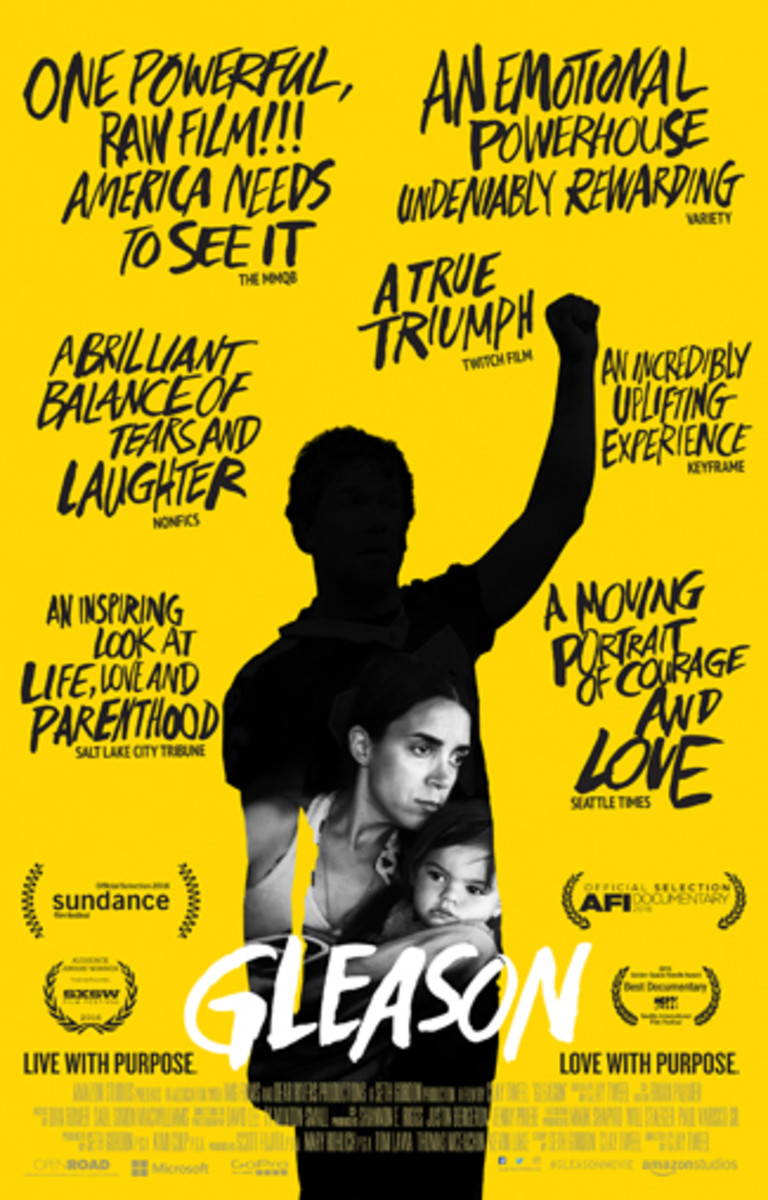
Gleason, on one side of the room, in his bed. Varisco, a few feet away in her bed, fiddling on her laptop. Gulf between them. (In many ways.) She is trying to ignore him, but he wants to talk.
Gleason: “Are you okay?”
Varisco: (dispassionately) “Yep.”
In a few minutes, both are in bed, light on. She is trying to sleep.
Gleason: “I feel like you have no compassion towards me. Everything is rushed. You always have somewhere else to be. You rush any care you give me. I don’t understand what I did to deserve it. Please tell me how I can improve … You walked by me 10 times tonight while Rivers was on my lap. I tried to get your attention. You didn’t even look at me.”
Varisco: (dispassionately) “Sorry. I don’t think it’s anything you can improve. I think it’s more how I can improve.”
Gleason: “Do you feel angry when you are with me?”
Varisco: “Um, no. I feel more angry with myself, for how I feel, in general.”
Gleason: “What can I do to be more important to you?”
Varisco: “I don’t know.”
Ouch.
That’s the scene Michel Varisco knows so well. At premiers and private screenings around the country in advance of the release of Gleason, it provokes gulps, and tears.
Who would allow that painful open wound between husband and wife to appear in a documentary about their lives, for strangers in Allentown and Albuquerque and Albany to see?
“It had to be in,” said Varisco, in the city last week for the New York premier of Gleason. “If that scene isn’t in, the movie shouldn’t be made. If you want the real-life story of a family living with ALS, that’s the kind of scene that has to be included.”
* * *
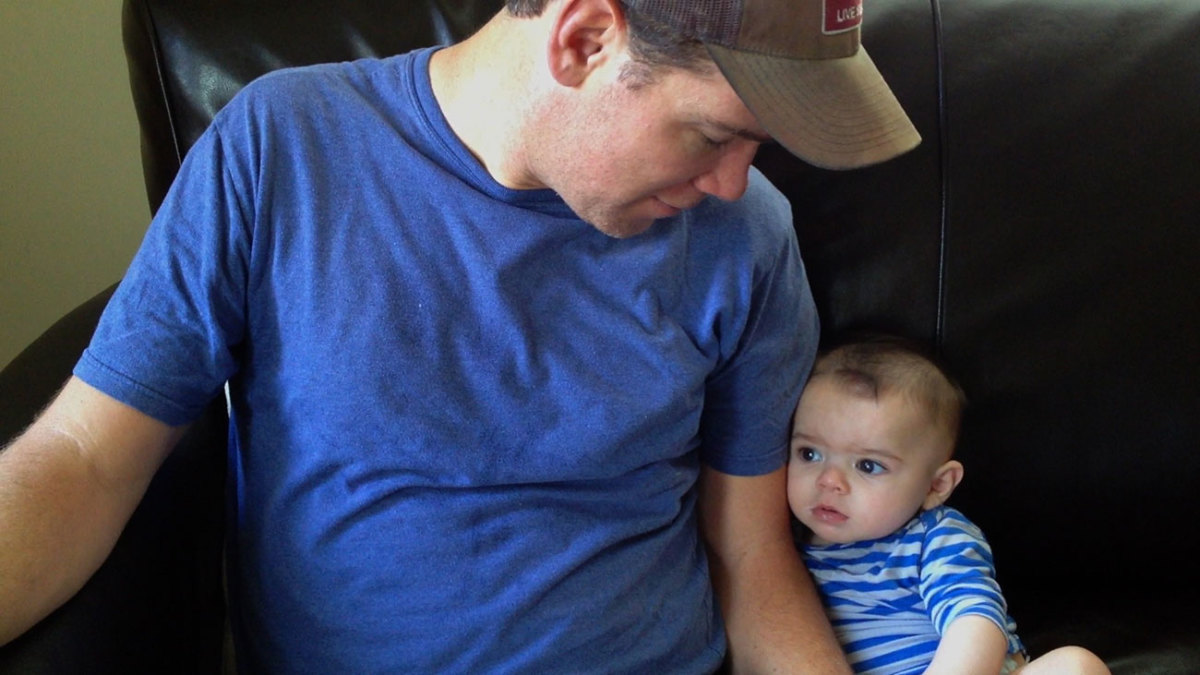
Gleason, 39, was diagnosed with ALS in January 2011, two months shy of his 34th birthday. Soon after, he and Varisco found out she was pregnant, and son Rivers was born that October. Knowing he might have only a few years to live, Gleason decided to tape a series of video journals, lessons to a son whom he might never be able to properly mentor. Two young filmmakers, Ty Minton-Small and David Lee, soon joined the project, to help document the family’s life. Director Clay Tweel then combed through that 1,300 hours of recorded history to shape the footage—raw and uncensored, as Gleason wanted it—into the two-hour feature film. Gleason got made in the hopes that it would spur funding for ALS research and bring attention to a debilitating disease that affects an estimated 30,000 Americans and for which there is no cure.
“What is so surreal about this,” Drew Brees, Gleason’s friend and former teammate, said recently, “is that all this footage, the thousands of hours of it, was not compiled with the intention of being seen at the Sundance Film Festival. But that’s where it ended up.”
That’s where I saw it in January, in my first of two viewings. I found myself agreeing with The New York Times’ review after it debuted there: “Prepare to be wrecked.” I teared up or downright wept six times during the showing, and the crowd there was equally moved. I sat next to former NFL long-snapper Lonie Paxton, and I could hear him choke up during the film.
Amazon bought the film for a reported $2.5 million after Sundance; the distributor of the Oscar-winning Spotlight, Open Road, is handling the film. The Los Angeles Times called it “a portrait of encroaching mortality rarely captured on film.”
Rarely? Maybe never.
“Today I’m going to talk about my insecurities,” he says one day when his voice still works, and he proceeds to do so.
Almost two years into the disease, a significantly weakened Gleason stares into the camera and says: “I have no faith I can heal. I want to punch something, but I can’t. All I can do is scream.”
In one of his lessons to baby Rivers, intended for him to hear years later, Gleason says: “I’ve been thinking about fathers and sons a lot since you’ve been born. At this point it looks like we’re not going to have the normal father-son relationship. I can’t go out and play catch with you. I can’t throw you batting practice. But I’m going to do everything I can to be a good father, to give you what a son needs from his father. I’m gonna be around, buddy. It’s not gonna be easy, but it’s gonna be awesome.”
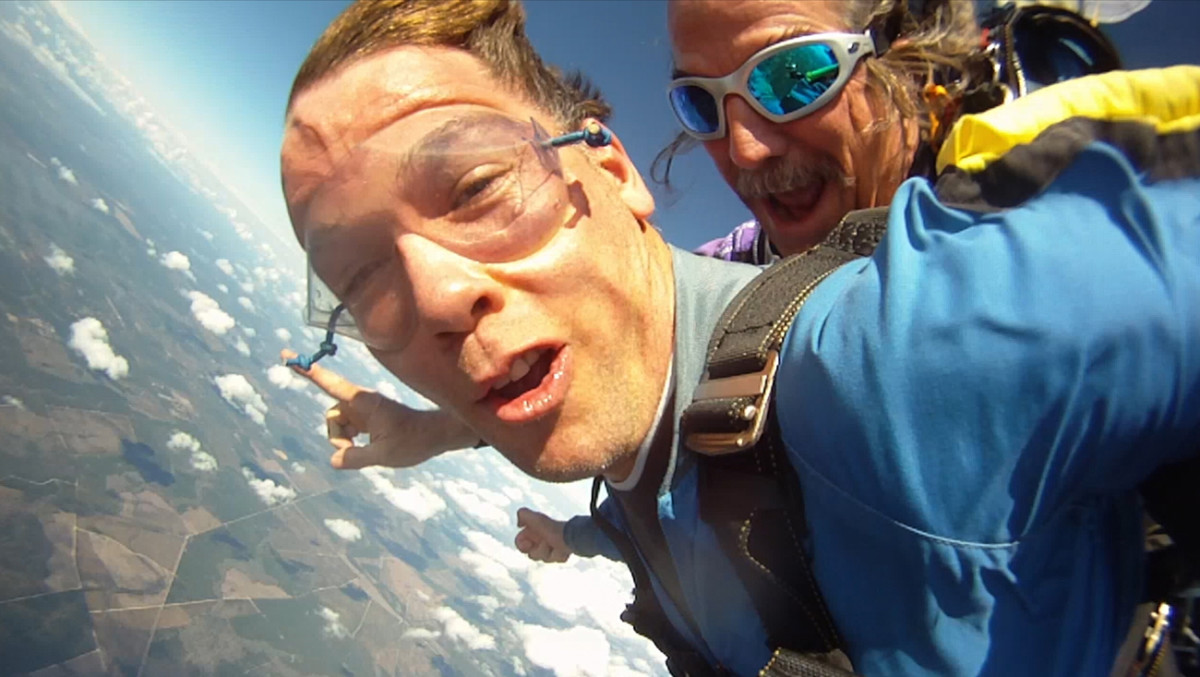
A person such as Gleason who thrived on physicality in his career would have quite a few reasons to wallow in self-pity over his disease, and he has some deep valleys in this movie. But he rises from them. Gleason gives you hope because of his relentless ability to bounce back, and because he maintains his humor and sense of fun in some of the bleakest times. He jokes with a nurse while receiving an enema. (Hey, as I’ve said, the movie’s real.) He drops one-liners to Rivers during the video journals that he hopes will be mile-markers for his life.
The movie will blow away even the hardest of people. But Gleason badly wants viewers to come away with something else, and he communicated that with an email Sunday night: “If the audience walks away from this film with anything, our hope is they understand that in the midst of our adversity, we will find our greatest opportunities. Everyone faces tragedy and adversity, but most often, that is where we find our power and meaning.”
Life is complicated. ALS is complicated. Mostly it seems the kind of disease that has to make one want to jump off the top of a tall building after being diagnosed. But Gleason decided to take the mountain of footage and try to make something of it—not for his own self-aggrandizement, but to help the cause, to shine a light on one of the cruelest diseases known, and to tell the viewers: Okay, they put a statue of me outside a major football stadium in America. But did you know that on the day that statue of me was unveiled, I couldn’t make it home without soiling myself?
So, yes, you leave this movie wrecked. But you also leave the movie thinking that all hope is not lost, because Gleason doesn’t lose hope. Amid the tears and screams and utter loneliness because his wife won’t look at him, a bit of good fortune happens. He connects with the band of his adolescence, Pearl Jam, and Eddie Vedder comes to talks to him. Gleason asks Vedder, whose biological father was not present in his life, what he wishes he knew about his dad.
Vedder got choked up. It was a great question.
“I would want to know,” Vedder says, struggling to speak, “if you loved me. And how much.”
Silence.
Vedder: “Steve Gleason, sitting in for Barbara Walters this week.”
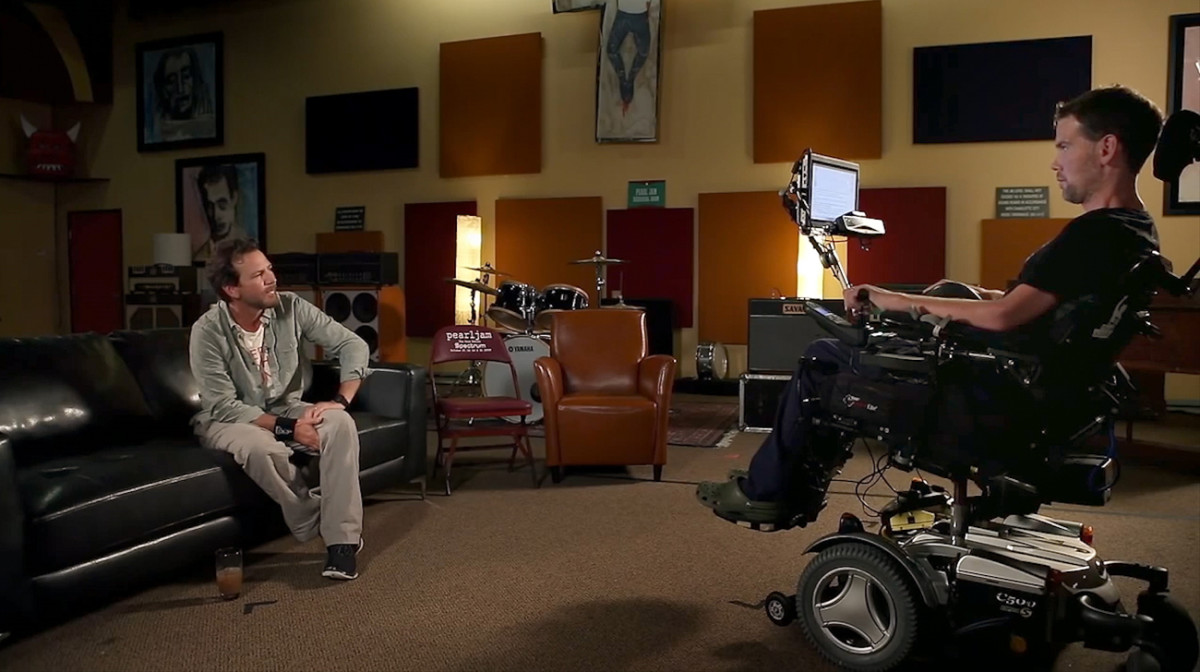
Brees was in Sundance, supporting Gleason, as were several teammates including longtime friend Scott Fujita, who is one of the MVPs in the making of the film. The friends, football players and just pals got overcome too, seeing the film of the man they’d known as a special-teams demon and an earnest person.
“He played the game like he lives his life: all in,” said Brees. “Running down on kicks, loving his family, leaving a legacy for his son … Watching this, watching him, I am thinking, as a father of four myself, about the kind of father I want to be.”
This was strange, I thought: On the red carpet at Sundance, I saw a linebacker for the Indianapolis Colts, D’Qwell Jackson. I racked my brain: Why was he here? What was his connection to Gleason?
None, as it turned out. Well, one. Jackson played linebacker alongside Fujita on the Browns for a couple of years, and Fujita asked him if he wanted to support the Gleason cause. So Jackson contributed some money, in hopes of getting the movie made.
“I didn’t know anything, really, about ALS,” said Jackson. “I didn’t know Steve. Really, I wish I could tell you why I got involved—for a person I never met. Something just felt important. I don’t know. I just felt, here’s a guy affecting the world so much more than he ever did as a football player, and he needs help. Who wouldn’t help?”
* * *
There’s another star in this movie. Varisco, I believe, is so vitally important here—not only to the telling of the story and to the life and care of her husband, but because she agreed to allow the kind of really painful family story that thousands of families must be enduring to be told. Really painfully. In a scene early in the movie, when Gleason tries to swim, he struggles at something that was formerly so easy for him. The camera catches Varisco, lip quivering. You can see her thinking that her life, and her husband’s, will never be the same again.
Crowds will identify with her. A bit of a wild child growing up in New Orleans, she met Gleason and was instantly attracted to his inquisitive, adventurous streak. They got married on a bridge in New Orleans. They took vacations in vans to the wilderness. And one day she found out the love of her life had ALS and might have two to five years to live. And another day, when he got the tracheotomy, she found out he could live another 50 years with a machine breathing for him.
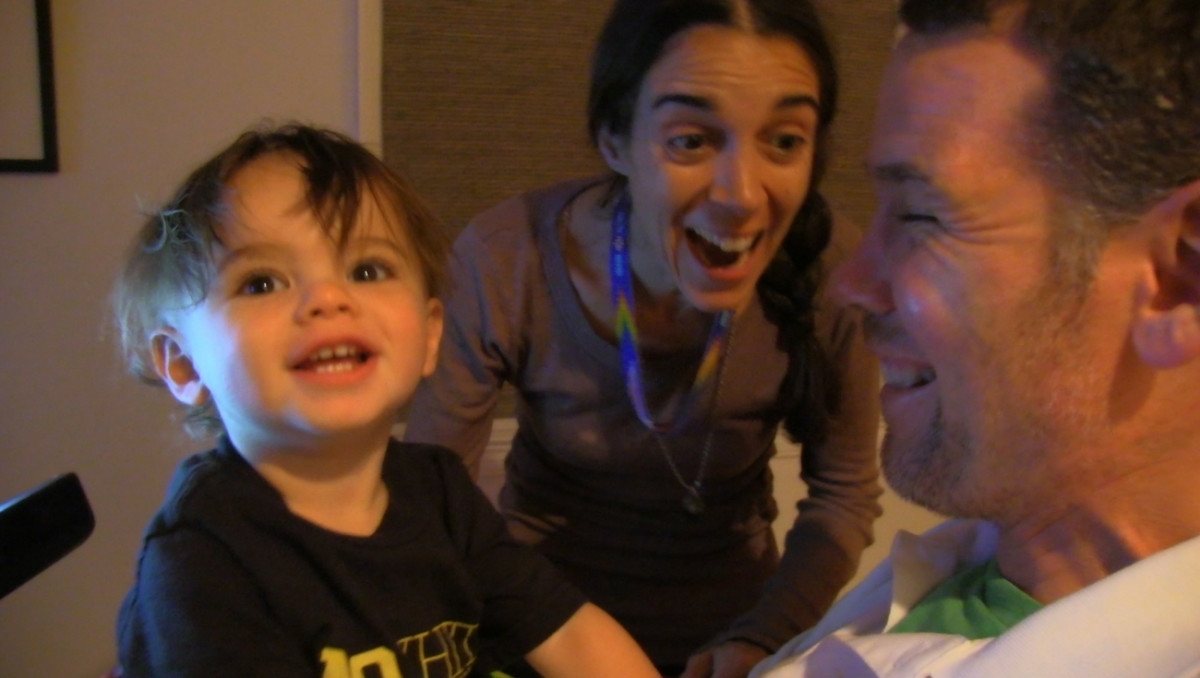
Who knows where they’d be today if Steve didn’t have ALS? Hitch-hiking through Shanghai, with Rivers in a backpack. Somewhere, not on an American tour through airports, getting interviewed and dealing with the weirdness of a fame she never thought she’d experienced.
When this is all over, she’ll return to be one of the everyday caregivers for her husband, perhaps as long as they both shall live. She’s fortunate in one way: Lots of caregivers in her shoes have to do most, or all, of it themselves. Gleason has several people to help every day.
“My life at this exact moment … “ she said, and paused. “It’s like I’ve got an inner strength, and I don’t fear the unknown anymore. The future, I don’t worry about it the way I used to. I worry about tomorrow tomorrow. I know I have plans, but I’ll worry about them when I wake up.”
I asked Steve Gleason, as he’s traveled to premiers and screenings for various groups, what has been the most powerful part of watching others watch his life. “The most impactful aspect of showing the film, for me so far, is how it seems to resonate with nearly everyone,” he said. “It's a movie that transcends football and ALS. People who want to be better parents, or have had a desultory relationship with a parent, or anyone who's faced adversity, the film connects and changes them.’’
* * *
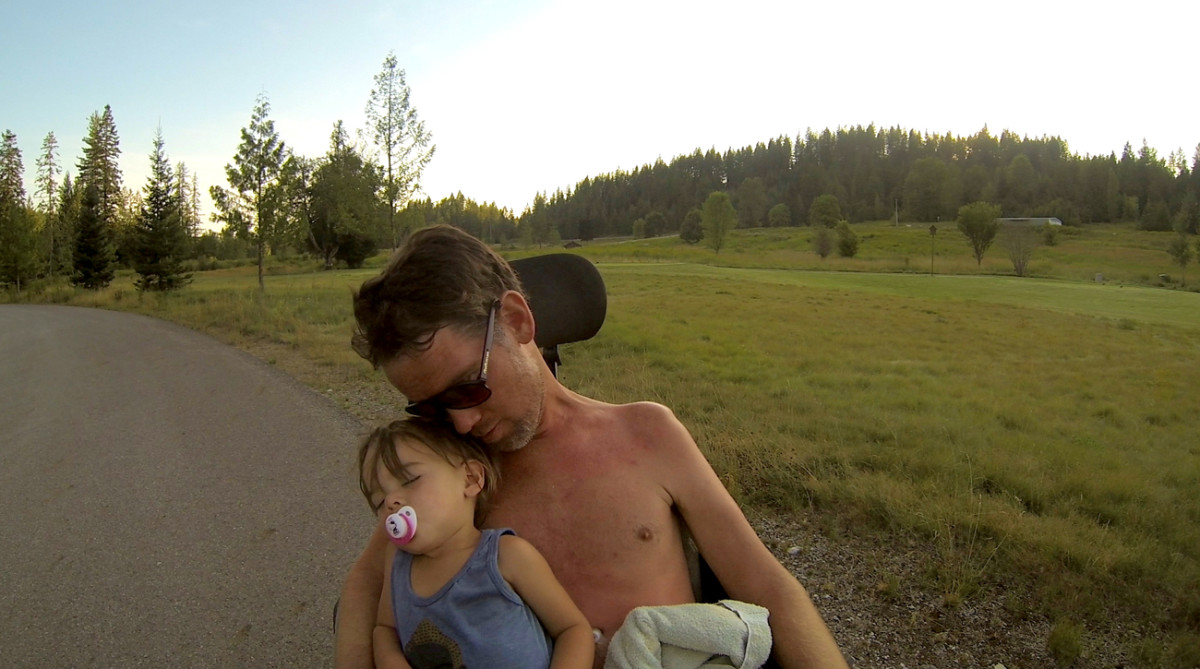
So it’s not over for Gleason, as you’ll see when you watch the film. He will live, and he will be up and down, and he will have moments of joy and sadness.
At the end of the screening at Sundance, Fujita saw me and asked me what I thought.
(Pardon me for the blue language here.)
“Whew,” I said, shaking my head. “I just cried my balls off. I think I cried six times.”
Later that day, a text popped up on my phone, from Gleason:
how’s your balls?
The Team Gleason foundation works to provide equipment and services to people with ALS, raise awareness of the disease and promote the search for solutions and a cure. The site also has listings of theaters around the country scheduled to show the film.
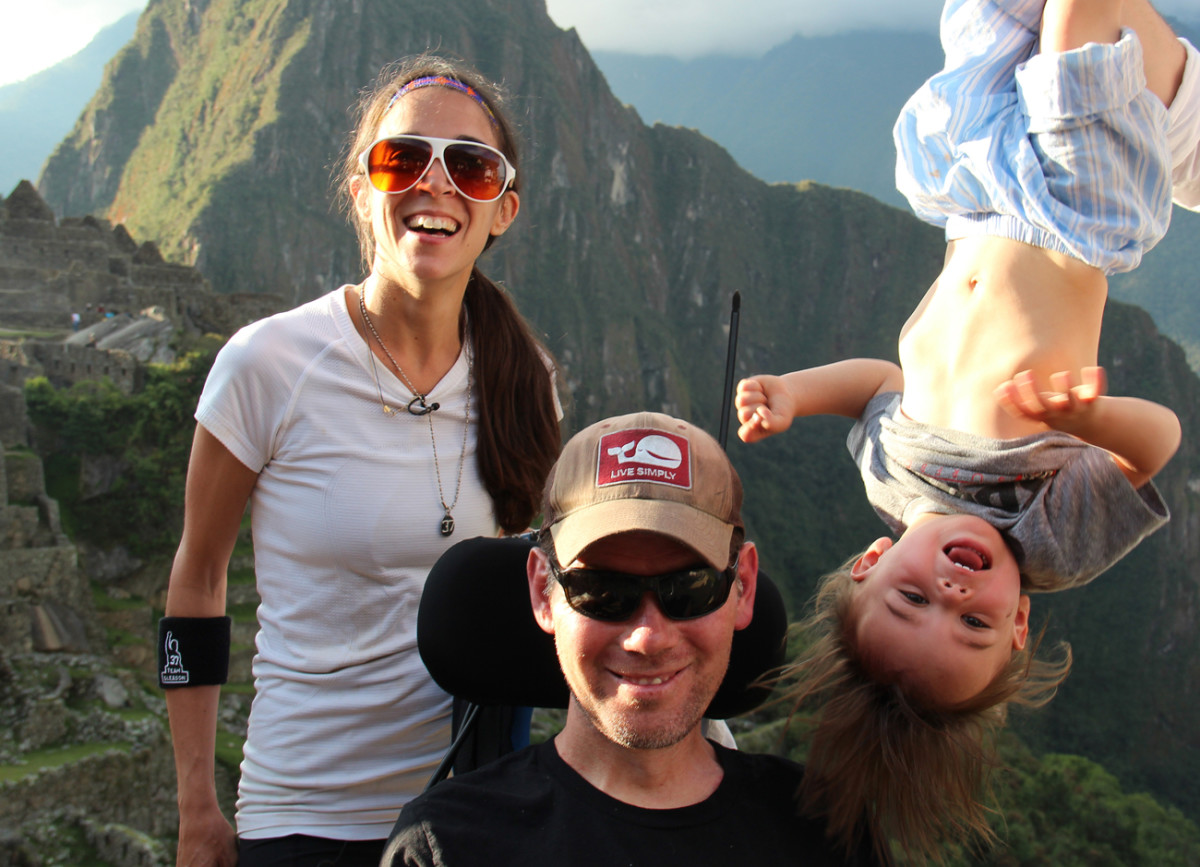
Question or comment? Email us at talkback@themmqb.com.
